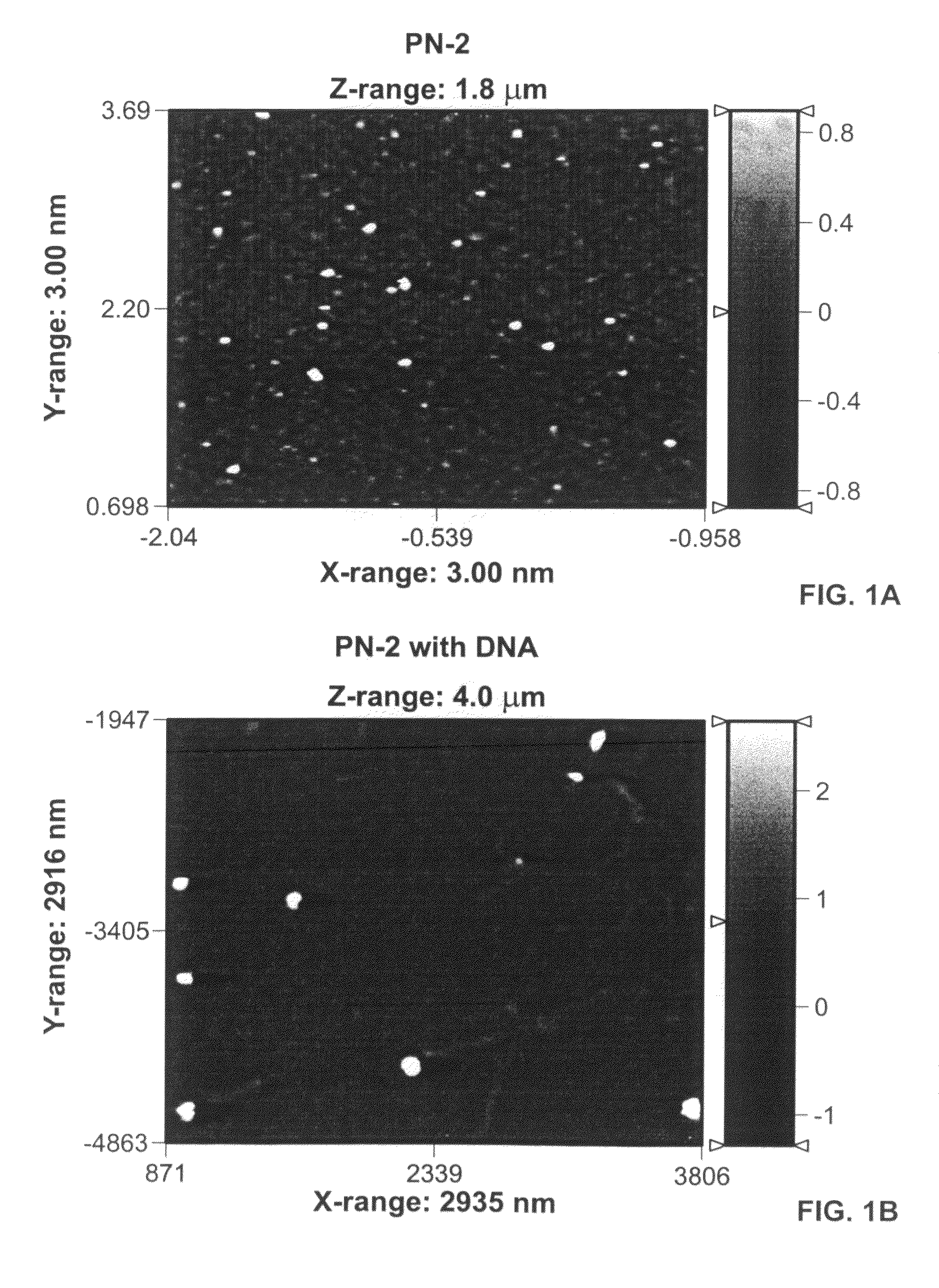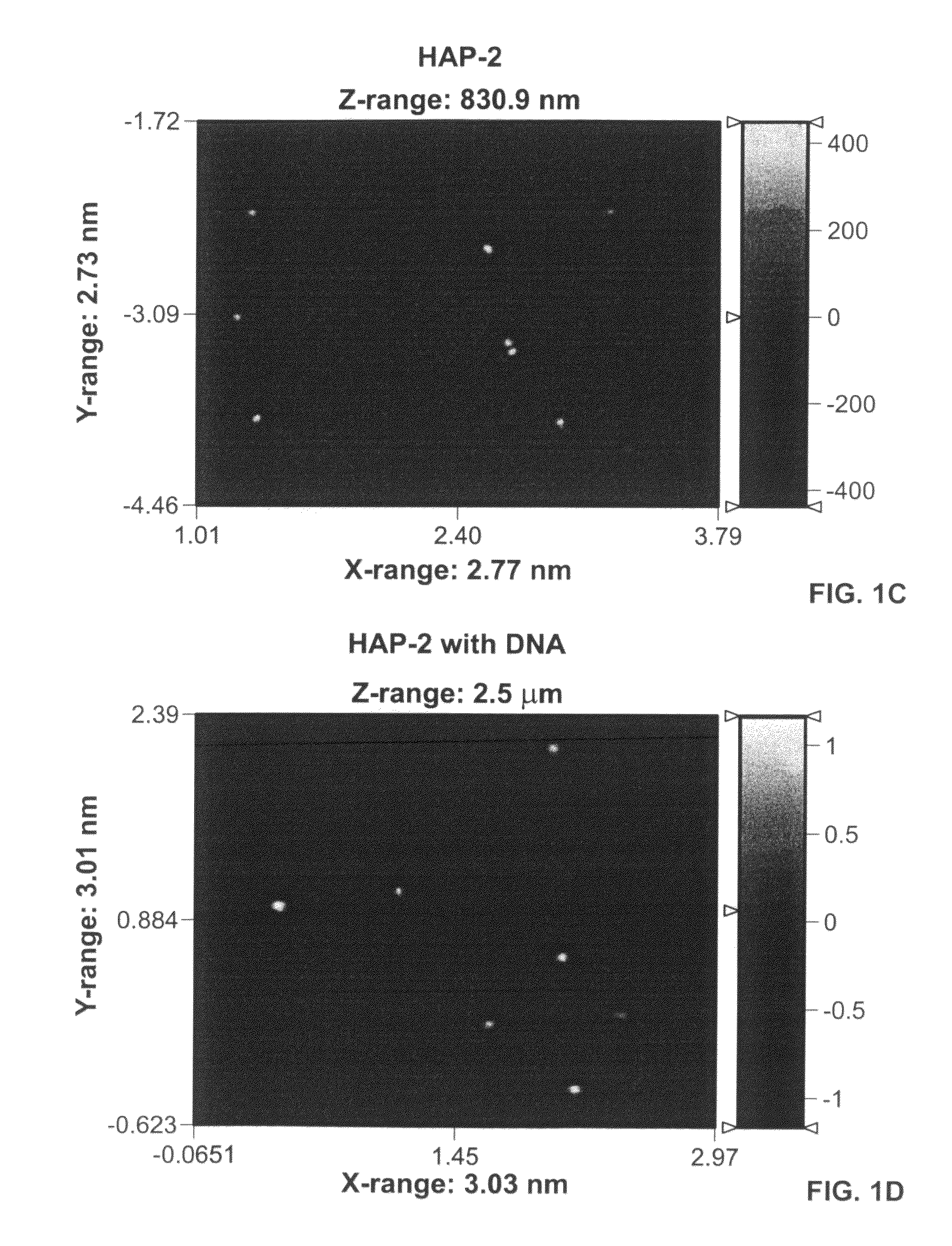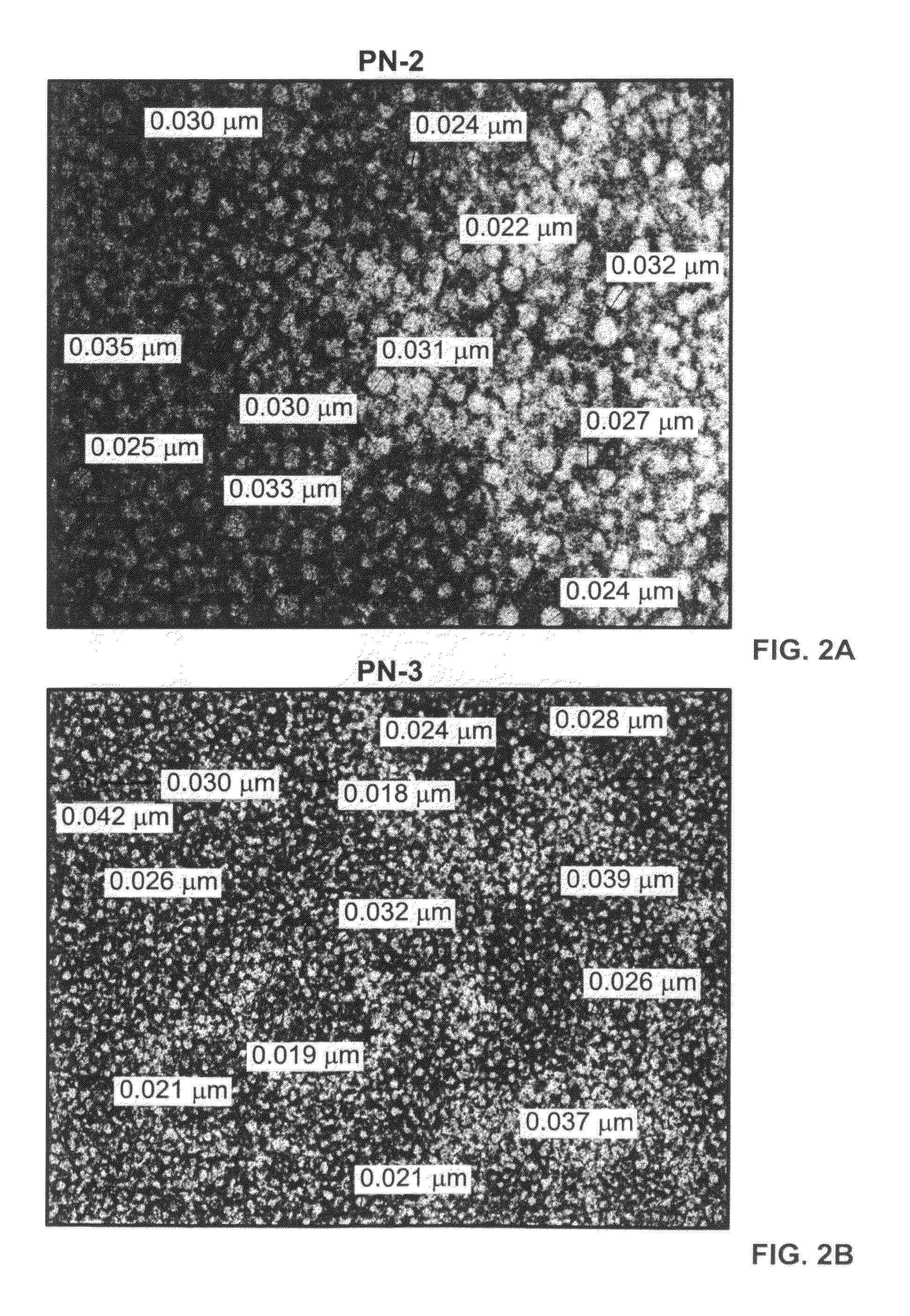Crosslinked PEI nanoparticle transfection agents for delivery of biomolecules with increased efficiency
a biomolecule and efficiency-enhancing technology, applied in the direction of capsule delivery, microcapsules, gene material ingredients, etc., can solve the problems of high cytotoxicity, low transfection efficiency, inability to deliver others, etc., and achieve the effect of reducing cytotoxicity and efficient polymeric transfecting agen
- Summary
- Abstract
- Description
- Claims
- Application Information
AI Technical Summary
Benefits of technology
Problems solved by technology
Method used
Image
Examples
example 1
[0084]The positive charge of cationic polymer polyethyleneimine (PEI) (Mw 1 kDa-800 kDa) was partially shielded on crosslinking with a homobifunctional hydrophobic reagent, with epoxide functionality, named 1,4-butanediol diglycidyl ether (bisepoxide). In order to substitute 5% amines of PEI, bisepoxide (11.08 μl, 1 μl / ml, dd water, 45° C.) was added dropwise to a pre-heated (45° C.) solution of PEI (100 mg, 1 mg / ml) with continuous stirring maintaining the temperature at 45° C. for 16 h. Then the volume of the reaction mixture was reduced to half on a rotary evaporator. The remaining solution was subjected to dialysis against water for 72 h with intermittent change of water. Thereafter, the solution was concentrated in a speed vac to obtain a white residue of nanoparticles (PN-1, 88 mg, ˜80% yield) as reported by Swami et al. (Biochemical and Biophysical Research Communications 362 (2007) 835-841.).
example 2
[0085]In an attempt to realize 10% substitution of amines in PEI, bisepoxide (22.16 μl, 1 μl / ml, dd water, 45° C.) was added dropwise to a solution of PEI (100 mg, 1 mg / ml), with continuous stirring and subsequently the reaction was carried out as described above.
example 3
[0086]With the purpose of substituting 15% amines of PEI, bisepoxide (33.24 μl, 1 μl / ml, dd water, 45° C.) was added dropwise to a solution of PEI (100 mg, 1 mg / ml), with continuous stirring. The reaction was carried out as described in example 2.
PUM
| Property | Measurement | Unit |
|---|---|---|
| zeta potential | aaaaa | aaaaa |
| size | aaaaa | aaaaa |
| temperature | aaaaa | aaaaa |
Abstract
Description
Claims
Application Information
 Login to View More
Login to View More - R&D
- Intellectual Property
- Life Sciences
- Materials
- Tech Scout
- Unparalleled Data Quality
- Higher Quality Content
- 60% Fewer Hallucinations
Browse by: Latest US Patents, China's latest patents, Technical Efficacy Thesaurus, Application Domain, Technology Topic, Popular Technical Reports.
© 2025 PatSnap. All rights reserved.Legal|Privacy policy|Modern Slavery Act Transparency Statement|Sitemap|About US| Contact US: help@patsnap.com



